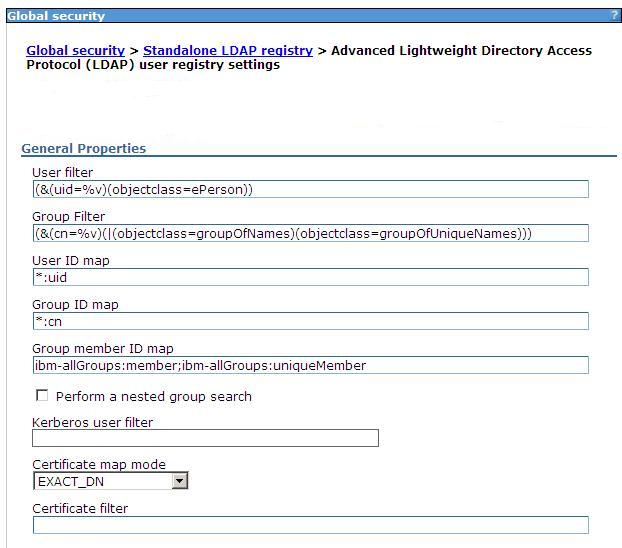Set TAM groups
Use these steps to configure the WAS admin console to add objects of the accessGroup class to the list of object classes that represent user registry groups.
Use the WAS admin console to specify security policies for applications that run in the WAS environment. We can also use the WAS admin console to specify security policies for other Web resources, based on the entities that are stored in the user registry.
TAM adds the accessGroup object class to the registry. TAM administrators can use the pdadmin utility, which is available only on the policy server host in the PD.RTE fileset, to create new groups. These new groups are added to the registry as the accessGroup object class.
The WAS admin console is not configured by default to recognize objects of the accessGroup class as user registry groups. Configure the WAS admin console to add this object class to the list of object classes that represent user registry groups. To do this configuration, complete the following instructions:
- From the WAS admin console, access the advanced settings for configuring security by clicking Security > Global security.
- Under User account repository, click the Available realm definitions drop-down list, select Standalone LDAP registry, and click Configure.
- Under Additional properties, click Advanced LDAP user registry settings

.
- Modify the Group Filter field. Add the following entry: (objectclass=accessGroup)
The Group Filter field looks like the following example:
(&(cn=%w)(|(objectclass=groupOfNames)
(objectclass=groupOfUniqueNames)
(objectclass=accessGroup)))
- Modify the Group Member ID Map field. Add the following entry: accessGroup:member. The Group Member ID Map field looks like the following example:
groupOfNames:member;groupOfUniqueNames:uniqueMember;
accessGroup:member - Stop and restart WAS.
Related concepts
Role-based security with embedded TAM
Related tasks
Enable an external JACC provider